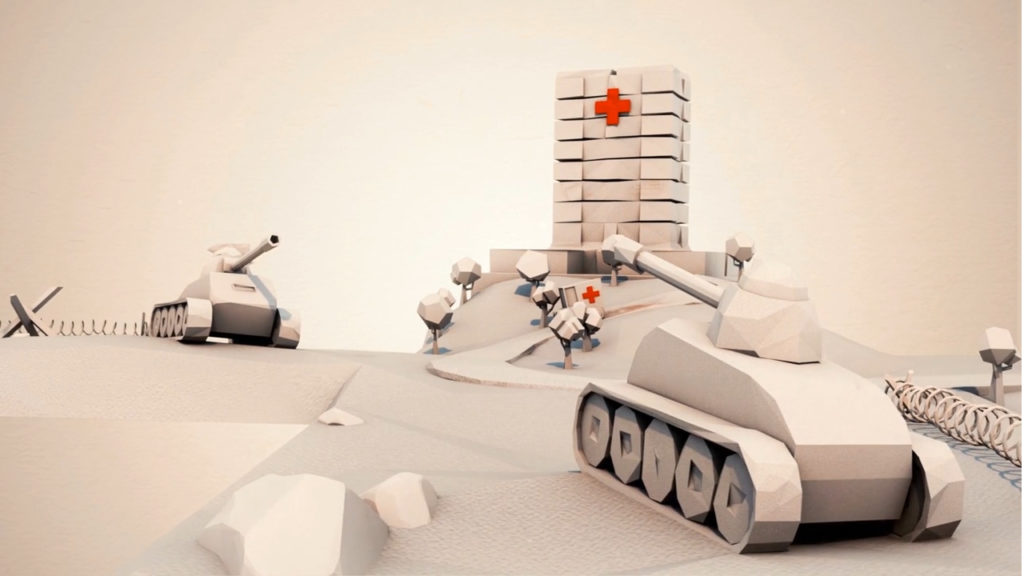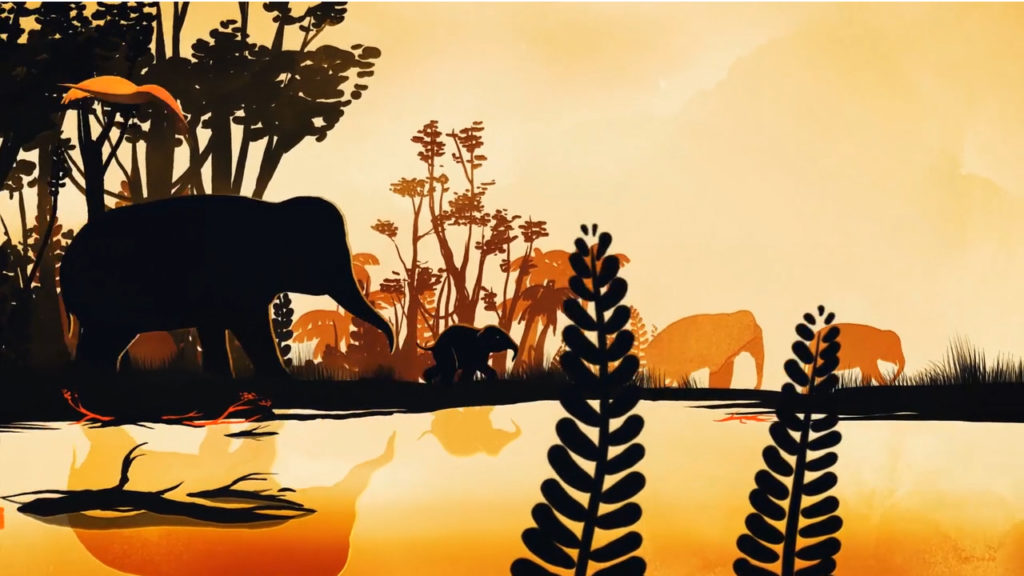Charities, NGOs and activist groups have a clear mission: to share their story in a way that elicits a meaningful emotional response from their audience. This content is often highly sensitive in nature, dealing in distressing themes and images. With this type of communication, the message has to be clear, unambiguous and backed by exhaustive research. If content creators fail to nail the right tone, or portray their characters inaccurately, the message runs the risk of being misjudged and misunderstood.

At Nucco Brain, we are well-versed in creating animated content for traditional commercial brands, but it’s our work for NGOs like The International Red Cross, WaterAid and World Animal Protection that really challenge us to get the message absolutely right. Here’s how we create powerful storytelling content that raises awareness without heavy-handedly manipulating our audience.

Finding the angle
When we tell a story that involves some form of tragedy, human or otherwise, we first ask ourselves: what are our primary goals in telling this story?
Our aim isn’t to make our viewers feel guilty, it’s to generate awareness of the message. So, while the use of distressing imagery and intentionally emotional narratives have their place within the messaging, we refrain from overuse to the extent of exploitation.
We avoid any cheesy or clichéd call-to-actions that plague content of this kind. If we’ve told our story right, our audience will have stepped into the shoes of our characters and entered their world. The audience should decide to care about the message because they’re moved by the narrative, rather than guilt-tripped by shocking images and sad music.
Charities need to tell personal stories within the environment they are seeking to change. And if viewers reject these, they’re essentially rejecting a part of their humanity.
Doing the research
At Nucco Brain, we do extremely thorough research into the themes, setting and characters we want to portray. Depending on the subject matter, there may be a cultural divide between the creative team telling the story, and the people being portrayed. Staying culturally sensitive and refraining from being perceived as condescending takes constant self-awareness and communication. We have to ask ourselves, both as individual and as a group, ‘what’s missing here?’
We certainly have a diverse and highly flexible team, but that’s not always enough. Animation, after all, is a collaborative process. We have to share our work frequently, asking all the difficult questions first. Our portrayal of different genders and ethnicities is constantly being vetted, and we have to welcome multiple points of input.
Sometimes, the creative process allows us to work with those who have experience in the field – this is invaluable to understanding the issues being addressed on a personal level.
When we made ‘Brides of the Well’, we were able to glean insights from writer/director Shekhar Kapur, who hails from the area of India where the narrative took place. This allowed us to populate our storyboards with visual elements that would allow the film to feel authentic, from realistic saris to trees from the region.

Creating believable worlds and characters
No matter how stylised the final content may be, our designs are grounded in reality. ‘Brides of the Well’ takes place in a real desert region, and we took visual cues from the geography and anthropology of the Punjab. With this foundation, we could then set the tone or mood of a specific scene. We used darker, lighter, warmer or cooler lighting and colours depending on the needs of the story, while retaining the authenticity of the setting.
One of the most common mistakes made when agencies or brands create sensitive content is to under-develop the characters. All too often, the West has perpetuated the ‘child in distress’ narrative, to damaging effect. To portray people from developing nations as empty husks in need of saving is both disempowering and wrong.
Our two heroines in ‘Brides of the Well’ are real people. They talk, laugh and fight like friends, and there is a universal truth to that element of teenage life that transcends cultural boundaries. People are people, after all. They’re imperfect, but that is what makes them human. Developing them as such will help your audience to connect with them, and by extension, your message.
Even when characters aren’t human, they can still be developed enough to create an emotional response from the viewer. Our video for World Animal Protection featured a baby elephant, taken from the wild and subjected to life as a riding animal for tourists. Everyone can identify with the fear of separation, displacement and cruel treatment. Our poor little elephant displays enough recognisable fear and sadness to make our audience empathise with his predicament.

Choosing the right style
As a visual storytelling studio specialising in animation, we strongly believe that animation is perfect for sensitive messages. That’s because animation and stylisation gives space to the imagination in ways that live-action can’t.
When the human brain is presented with distressing live-action footage, the immediate neurological response can be to reject the message. It’s a protective instinct that makes us shy away from traumatic and disturbing imagery, and may lead some viewers to tell themselves themselves that ‘it doesn’t concern me, and I don’t need to change.’
So why exactly does stylised animation serve to make a message more universal?
You can focus on the message
Animation allows us to focus on the core message, leaving only the most essential level of communication. Live-action footage is a detailed snapshot of reality, making it more difficult to leverage colours, shapes and visual metaphors. Stylisation, on the other hand, lets us take what we want to use and leave what we don’t.
You’re free of physical limitations
Animation frees us from physical constraints. It makes little difference to our budget whether we’re animating a dog or a dragon. We can travel in time more freely, without having to source authentic costumes or fly an entire film crew to the desert for several weeks. We can also work closely with our clients to realise our vision, allowing us full control of everything from planning to design.
It’s more relatable
Animation allows the viewer to step into the shoes of our characters. When the story’s protagonists aren’t photorealistic in appearance, it’s easier to imagine oneself as them. That’s why so many animated Disney films give their villains distinct physical traits, while the heroes are a little more… ‘heroic-looking’. The more detailed a character, the more difficult it is to slide into their slippers and feel what they feel.
It connects with the audience
Animation makes the message more digestible for casual viewers. With the right animation style, no story will ever look so cartoonish that it won’t be taken seriously.
Striking a balance between a lighthearted visual style and a heavy narrative allows us to connect with human emotion rather than visceral specifics. And that’s a surefire way to ensure that the message is heard, processed and shared in a crowded content marketplace.
Showing without telling
There is power in the abstract, or not showing something; in letting the viewer’s imagination fill in the blanks. If we suggest that terrible things are happening using silhouettes, contrast, shadows or visual metaphors, the human mind will connect the dots. It will internalise this message more effectively, because it’s co-creating it.
Our video for ‘World Animal Protection’ implied rather than explicitly showed the most distressing moments in our baby elephant’s life. His mother is killed by poachers off-screen, although the resounding crack of the gunshot is enough to make us fear the worst. This is arguably more effective than forcing our audience to watch her perish.
Similarly, when we made ‘Brides of the Well’ for WaterAid, we didn’t explicitly show the human impact of drought and starvation. Instead, we showed a starving cow to indicate scarcity, and used the background as a character to help tell our story. We wanted to build an immersive world with painterly colours, textures, and small visual details like these to fill in the gaps.
Forced child marriage was a major theme within this story, but we felt that the implication of this practice would be both more powerful and more tasteful than explicitly showing it on-screen. So we showed an old man asleep, while his teenage wife awoke alongside him. Imagination did the rest.
Developing the brand
Most NGOs prefer to generate conscious awareness primarily through their message, rather than traditional commercial branding. This gives us a lot more freedom to be creative.
The key is to generate an interplay between content and branding that enhances both. In ‘Brides of the Well’, we used very few bright colours throughout. The browns, oranges and yellows of the desert suggest aridity and a lack of moisture. It isn’t until the very end of the video that we finally see the WaterAid logo: a lavish and beautiful water animation in bright blue that, by contrast, brings home a refreshing and positive message.
Making the viewer care
It may sound like a no-brainer, but to really make something that resonates with audiences and helps enact the change you want to see in the world, you have to give a monkey’s. Because if you don’t care about the human impact of drought or the cruel elephant-riding industry, why should your audience?
Sensitive messages are much more powerful when they’re subtle, and when they do more than plead for donations. Treat your characters and their stories with the respect and sensitivity they deserve. Let art design and visual cues tell the stories that words can’t. And above all, care about what you’re creating.